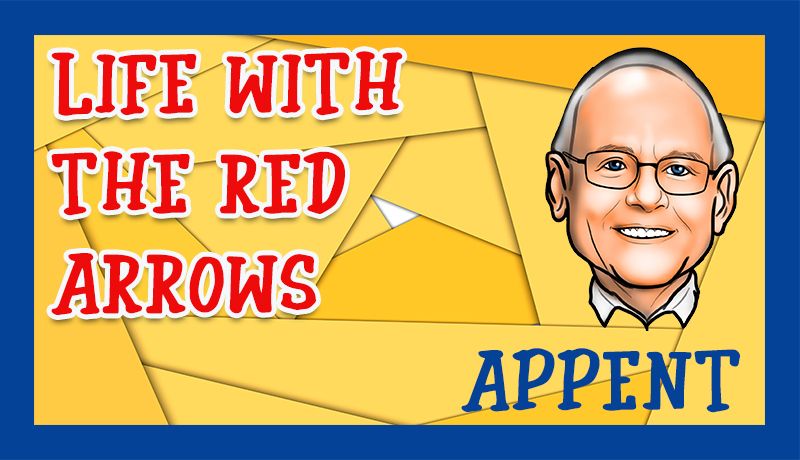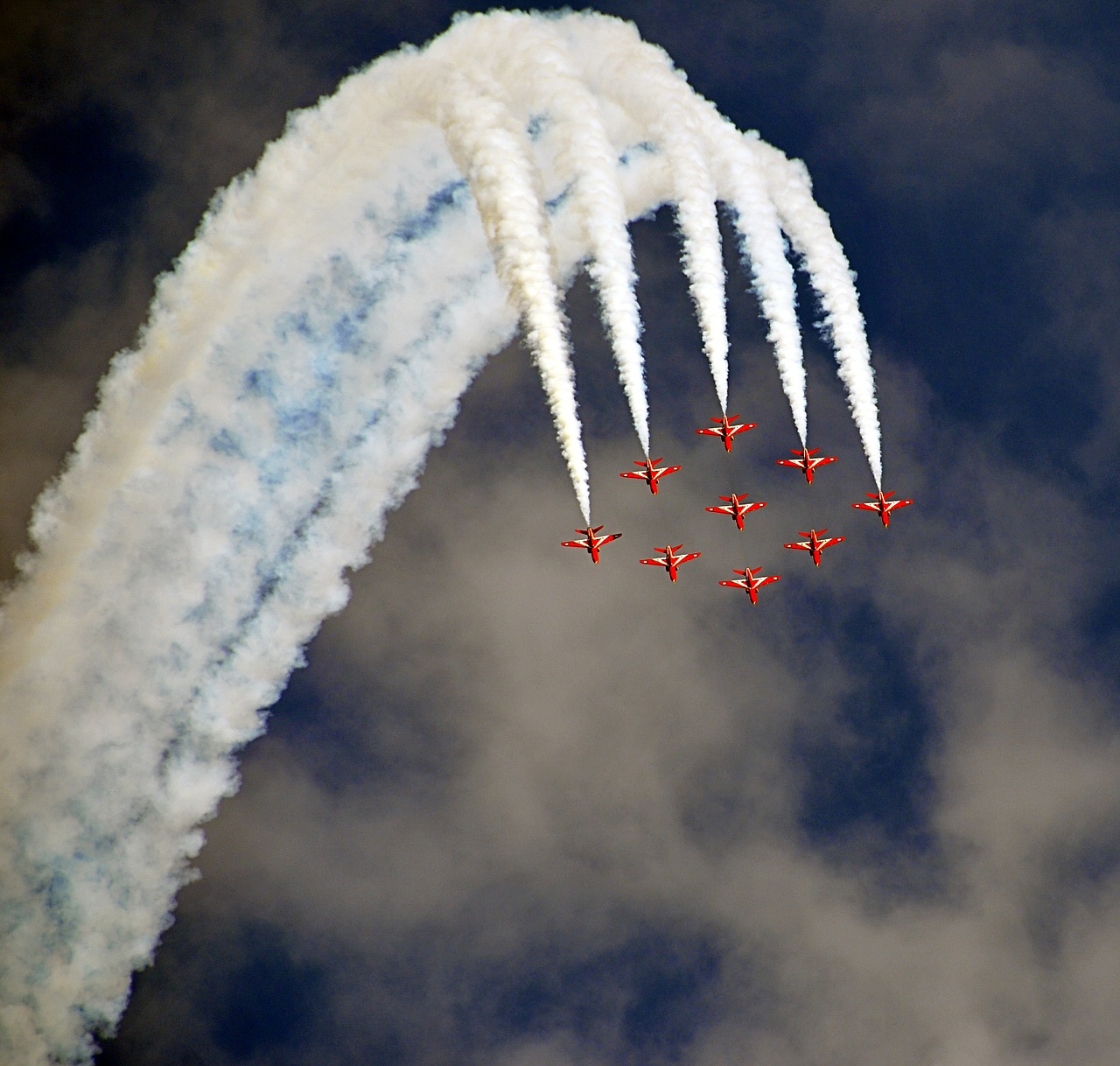Life with The Red Arrows

It was in late 1974, seven years into my Royal Air Force career, that I learned that the Red Arrows had a vacancy for a team photographer. For the benefit of those that are unaware, the Red Arrows, having originally been formed as a recruitment aid for the Royal Air Force, are widely acknowledged as the world’s greatest aerobatic display team.
To cut a long story short, I applied, was successfully interviewed and joined the team at the end of the 1975 display season. This timing made sense as it enabled anyone new to the team to learn their job during the winter (non-display) season.

My Role in the Team
I quickly learned that the post of Red Arrows photographer involved very little actual photography. The main part of my job was recording practice flights and displays onto video so that the team could watch it after they landed and see how the display appeared to the public.
Every display is performed to a specific point on the ground, known as the datum point, and that is where I stood to record the performance on video.
At the end of each practice session I would set up the video in the pilots’ crew room so that they could watch it and criticize their performance, noting where they needed to improve.

Pilot Training
At the end of every display season, three pilots leave the team to return to normal flying duties, their places being taken by three new pilots. Although these are all highly qualified pilots in their own right, formation flying is a completely different discipline and they have a lot to learn over the coming months.
This training begins with the team leader taking up each pilot in turn and teaching them close formation flying. Once the leader is happy with their progress, they go flying in increasingly larger numbers of aircraft until all nine are up together and flying in formation. Then the training begins in earnest, learning the various manoeuvres that make up the display. Even the six experienced pilots don’t necessarily have it easy as there are often new manoeuvres to learn in order to keep the display fresh each year in the eyes of the public.


The Display Season
Once the winter season draws to a close, then the display season begins. This would normally involve us being away from base for 3 to 4 days at a time, working out of other airfields performing several displays before returning to base and a couple of days off. Both the team manager and myself would attend every display, where he performed the commentary while I recorded the display on video. This led to some hairy journeys to get to the display site on time, but we normally made it.

A quick tip for you here. If you ever go to see a Red Arrows display, look for the team manager doing the commentary. He will be standing exactly at the datum point, where the center of the display is aimed. This will give you the best view of the complete display.

If you enjoyed reading the above and would like more stories of my time with the team, let me know in the comments and I'll see what I can do.
Your job sounds very exciting, tiring but exciting. You had a very important role to play as a photographer. It is because of you that the pilots were able to improve their formations and executions. I've never seen a live airshow before. It must be thrilling.
What an exciting job! I am not familiar with the Red Arrows. If I ever see them perform, I'll look for the manager. Nothing like being in the center of things.
Thanks for sharing this memory with us.
I would be hella scared being next to those jets. And flying in formation sounds extremely nerve racking. Still it’s not an everyday job so it will be a cool story to break the ice with people in a joking way.